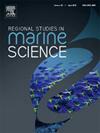Integrating machine learning algorithms and fuzzy AHP for assessing livelihood vulnerability in Southwestern Coastal Bangladesh
IF 2.1
4区 环境科学与生态学
Q3 ECOLOGY
引用次数: 0
Abstract
The people living in the coastal regions of Bangladesh rely significantly on nature for their livelihoods, which renders them sensitive to climate change. The aim of this study is to determine the key indicators which contribute more to livelihood vulnerability of disaster-prone Gabura union in southwestern coastal Bangladesh. To achieve this goal, three machine learning algorithms are employed for determining the key indicators of livelihood vulnerability. Subsequently, a livelihood vulnerability index (LVI) is constructed using these key indicators with the weighting of indicators facilitated by Fuzzy AHP method. And finally, a livelihood vulnerability map (LVM) is generated to visualize the spatial distribution and analysis of livelihood vulnerability within the union. The study employs a mixed-methods approach, including questionnaire surveys, focus group discussions, key informant interviews, and remote sensing image analysis. A household survey of 950 households tracked livelihood vulnerability using 25 indicators across three domains of vulnerability, e.g., exposure, sensitivity, and adaptive capacity. ArcGIS and Google Earth Engine facilitated spatial data analysis. The Gabura Union exposed high vulnerability (LVI 0.63), driven by elevated exposure (0.61) and sensitivity (0.59) and lower adaptive capacity (0.30). The Livelihood Vulnerability Map (LVM) illustrates vulnerability across wards of the union, emphasizing high vulnerability zones on the periphery of the union, along the Kopothakho and Kholpetua rivers while central part of the union shows a moderate vulnerability level. The study's novelty lies in effectively integrating multiple methods for livelihood vulnerability assessment. Policymakers should target interventions focusing on areas along the Kopothakho River, to enhance community resilience.
整合机器学习算法和模糊 AHP,评估孟加拉国西南沿海地区的生计脆弱性
生活在孟加拉国沿海地区的人们主要依靠大自然为生,这使他们对气候变化非常敏感。本研究的目的是确定对孟加拉国西南沿海易受灾害影响的 Gabura 联盟的生计脆弱性影响较大的关键指标。为实现这一目标,我们采用了三种机器学习算法来确定生计脆弱性的关键指标。随后,利用这些关键指标构建了生计脆弱性指数(LVI),并通过模糊 AHP 方法对指标进行加权。最后,生成生计脆弱性地图(LVM),以直观显示联盟内生计脆弱性的空间分布和分析。研究采用了混合方法,包括问卷调查、焦点小组讨论、关键信息提供者访谈和遥感图像分析。对 950 个家庭进行的住户调查使用了 25 个指标来跟踪生计脆弱性,这些指标涉及脆弱性的三个领域,如暴露程度、敏感性和适应能力。ArcGIS 和谷歌地球引擎为空间数据分析提供了便利。加布拉联盟暴露出较高的脆弱性(LVI 0.63),原因是暴露度(0.61)和敏感度(0.59)较高,而适应能力(0.30)较低。生计脆弱性地图(LVM)显示了该联盟各区的脆弱性,强调了联盟外围、Kopothakho 河和 Kholpetua 河沿岸的高脆弱性区,而联盟中部则显示出中等程度的脆弱性。这项研究的新颖之处在于有效整合了多种生计脆弱性评估方法。决策者应将干预措施的重点放在 Kopothakho 河沿岸地区,以提高社区的恢复能力。
本文章由计算机程序翻译,如有差异,请以英文原文为准。
求助全文
约1分钟内获得全文
求助全文
来源期刊

Regional Studies in Marine Science
Agricultural and Biological Sciences-Ecology, Evolution, Behavior and Systematics
CiteScore
3.90
自引率
4.80%
发文量
336
审稿时长
69 days
期刊介绍:
REGIONAL STUDIES IN MARINE SCIENCE will publish scientifically sound papers on regional aspects of maritime and marine resources in estuaries, coastal zones, continental shelf, the seas and oceans.
 求助内容:
求助内容: 应助结果提醒方式:
应助结果提醒方式:


